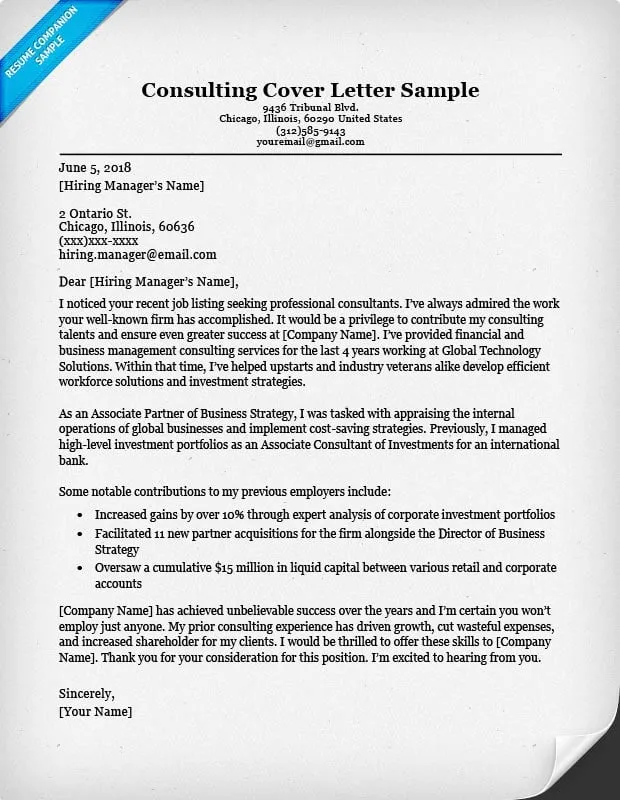Understanding the Consultant Cover Letter
A consultant cover letter is a crucial document in your job application. It serves as your introduction to a potential employer and gives you a chance to showcase your qualifications, skills, and enthusiasm for the position. Unlike a resume, which provides a factual overview of your experience, a cover letter allows you to tell your story and explain why you are the perfect fit for the consulting role. A well-crafted cover letter can significantly increase your chances of landing an interview.
What is a Consultant Cover Letter?
A consultant cover letter is a formal business letter that accompanies your resume when you apply for a consulting position. It highlights your relevant skills, experience, and qualifications, while also expressing your interest in the specific role and the company. It’s a chance to persuade the hiring manager that you possess the necessary expertise and are a great match for the company’s culture and needs.
Why is a Consultant Cover Letter Important?
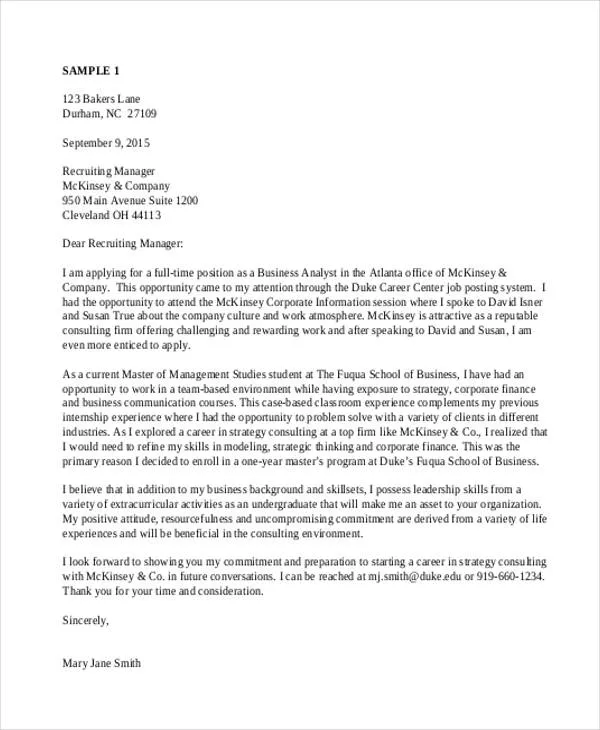
In the competitive field of consulting, a strong cover letter is paramount. It provides context to your resume, allowing you to elaborate on specific achievements and explain how your skills align with the job requirements. It also demonstrates your communication skills, attention to detail, and genuine interest in the position. Hiring managers often use cover letters to assess your writing ability, your understanding of the role, and your overall professionalism. Many employers will not even consider an applicant without a cover letter.
Key Components of a Consultant Cover Letter
A well-structured consultant cover letter is essential for making a positive impression. Each section plays a vital role in showcasing your suitability for the role. By following a logical and organized structure, you ensure that your letter is easy to read and effectively conveys your qualifications and enthusiasm.
Contact Information and Date
Start your cover letter with your contact information (name, address, phone number, and email address) at the top left corner. Directly below your contact information, add the date. This ensures the employer knows when the letter was written and how to reach you.
Recipient Information
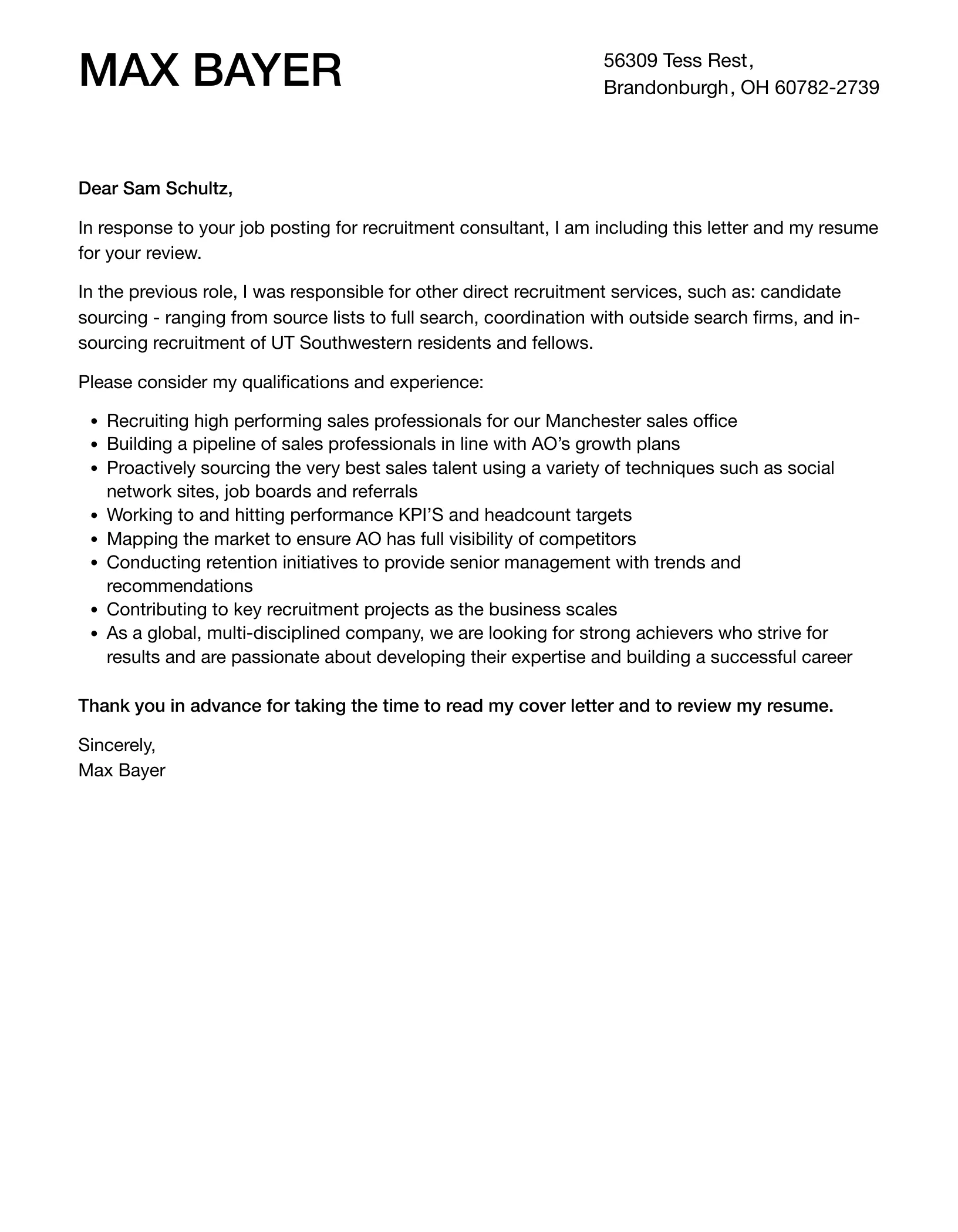
Next, include the recipient’s name and title (if known), the company name, and the company’s address. Addressing your letter to a specific person, such as the hiring manager or the recruiter, shows that you’ve done your research and are serious about the role. Researching the hiring manager’s name also allows you to personalize your letter.
Professional Greeting
Begin your letter with a professional greeting, such as “Dear Mr./Ms. [Last Name]” or “Dear Hiring Manager.” Avoid generic greetings like “To Whom It May Concern.” If you are unsure of the hiring manager’s name, use “Dear Hiring Manager” or, if appropriate, “Dear [Department Name] Hiring Team.”
Body Paragraphs
The body paragraphs are where you make your case. They should be clear, concise, and compelling. The goal is to highlight your relevant skills, experience, and enthusiasm for the role while tailoring the information to the specific requirements of the job posting. Be sure to use strong action verbs and provide concrete examples to support your claims.
Paragraph 1 Expressing Interest and Value
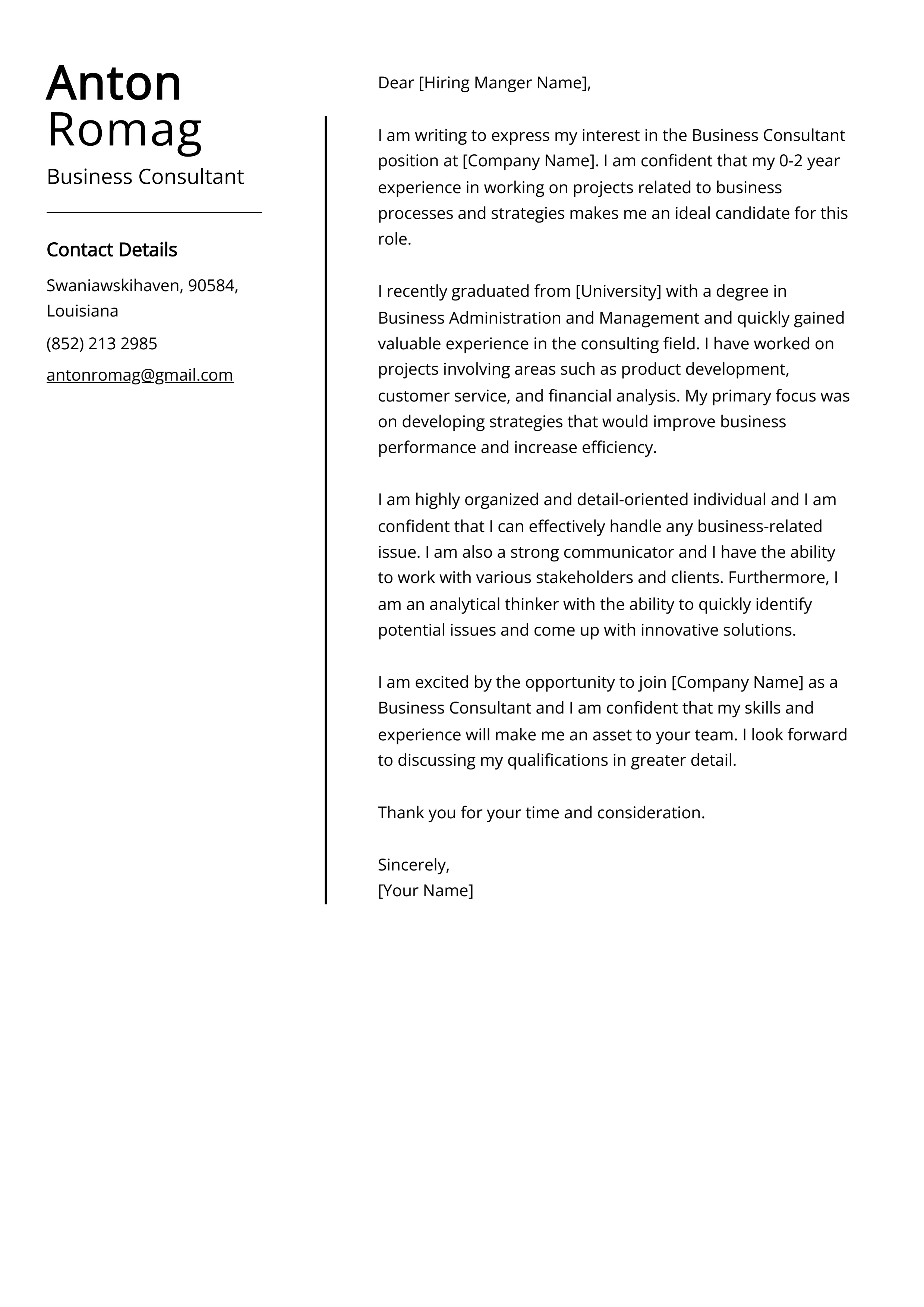
In the first paragraph, state the position you’re applying for and where you saw the job posting. Express your interest in the role and the company. Briefly mention what excites you about the opportunity and why you’re a good fit. Highlight your understanding of the company’s needs and how your skills can contribute to their success. Show genuine enthusiasm and demonstrate your understanding of their challenges.
Paragraph 2 Highlighting Relevant Skills and Experience
The second paragraph should detail your most relevant skills and experiences. Use this space to showcase your expertise and demonstrate how your qualifications align with the job requirements. Provide specific examples of your accomplishments, quantifying your achievements whenever possible. For instance, mention how you successfully managed a project or exceeded performance goals in a previous role. Tailor this paragraph to match the key skills and experience mentioned in the job description.
Paragraph 3 Demonstrating Knowledge of the Company
In the third paragraph, demonstrate your knowledge of the company and the industry. Research the company’s mission, values, recent projects, and challenges. Explain how your skills and experience can help them achieve their goals. Show that you understand their market position and the industry landscape. Mentioning specific projects or initiatives the company is involved in shows that you have done your research and are genuinely interested in the opportunity.
Paragraph 4 Call to Action
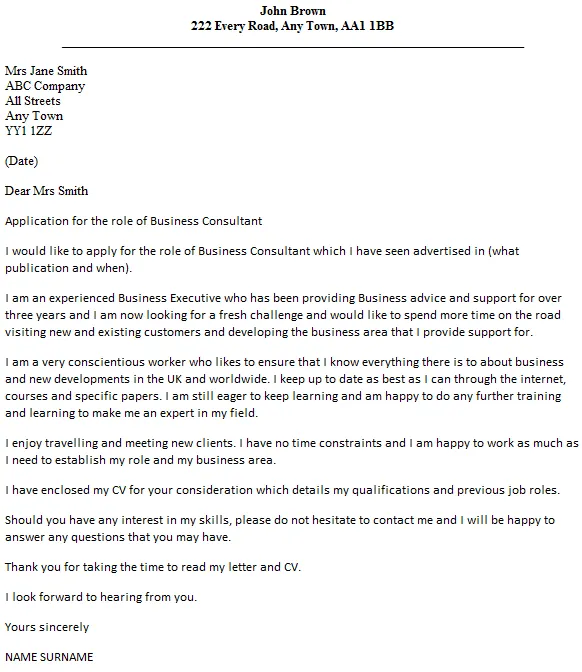
The fourth paragraph should include a call to action. Express your enthusiasm for the opportunity to discuss your qualifications further. Reiterate your interest in the role and your belief that you can contribute to the company’s success. Thank the reader for their time and consideration. Provide your contact information and indicate your availability for an interview.
Closing and Signature
Conclude your letter with a professional closing, such as “Sincerely,” “Best regards,” or “Thank you.” Below the closing, leave space for your handwritten signature (if submitting a printed copy) and then type your full name. Ensure that the tone of your closing matches the overall tone of your letter.
Formatting Your Consultant Cover Letter
Proper formatting is essential for creating a professional and polished cover letter. A well-formatted letter is easy to read and demonstrates your attention to detail. Following these guidelines will help you create a cover letter that makes a positive impression on the hiring manager.
Font and Size
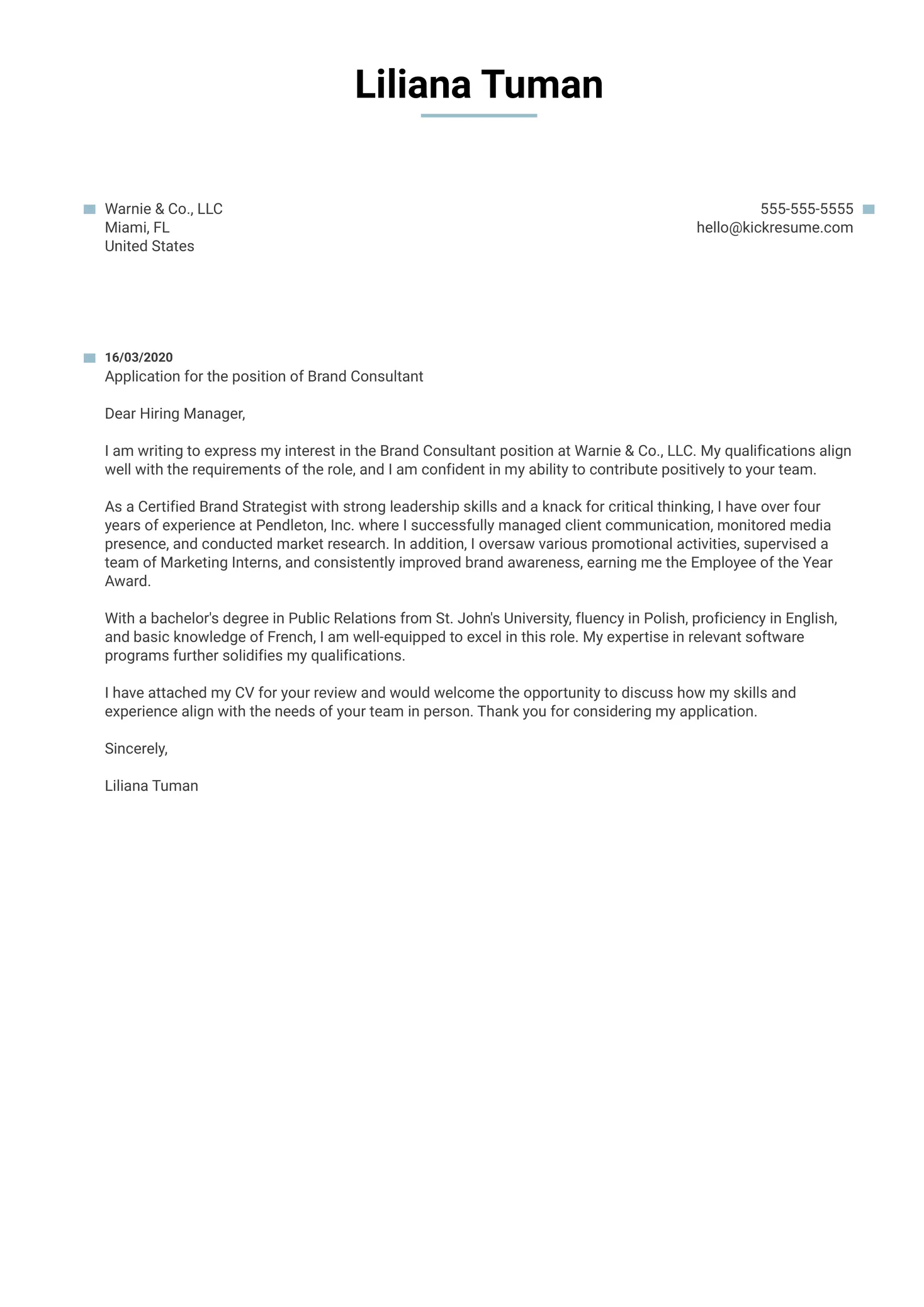
Choose a professional and readable font, such as Times New Roman, Arial, or Calibri. Use a font size between 10 and 12 points. Ensure that the font is consistent throughout the entire document. Avoid using overly decorative or unusual fonts, as they can make your letter difficult to read and appear unprofessional. Consistency in font choice is a sign of professionalism.
Margins and Spacing
Set standard margins of 1 inch on all sides of the page. Use single-spacing for the body of your letter and double-spacing between paragraphs. Proper spacing improves readability and makes your letter visually appealing. Ensure that there is sufficient white space to avoid a cluttered appearance.
Proofreading and Editing
Proofread your cover letter carefully for any errors in grammar, spelling, and punctuation. Mistakes can make you appear careless and unprofessional. Use a spell checker and grammar checker, but also read your letter aloud to catch any errors. Ask a friend or colleague to review your letter for a second opinion. It is crucial to present a flawless document.
Cover Letter Sample for Consultant
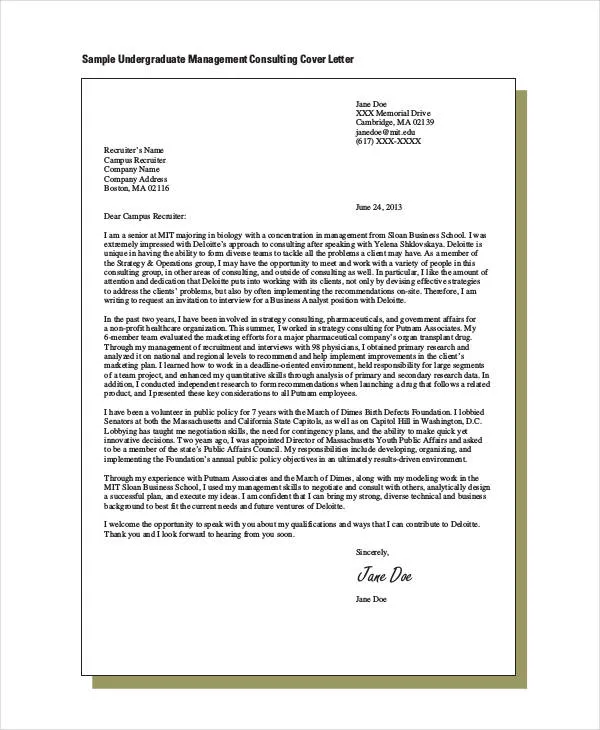
While a sample provides a framework, remember to tailor your cover letter to each specific job application. Customize your letter to reflect the requirements of the role, your unique skills, and the company’s values. Avoid using generic templates, which can make your application seem impersonal and demonstrate a lack of effort. Tailoring the letter is a key component of demonstrating your interest.
Adapt the Sample
Use a cover letter sample as a starting point, but do not copy it verbatim. Replace the generic content with your own information and experiences. Adapt the language, tone, and examples to match your specific skills and the requirements of the job posting. Use the sample as a template and infuse your own personality.
Tips for Tailoring Your Letter
Review the job description carefully and identify the key skills, experiences, and qualifications the employer is seeking. Customize your cover letter to highlight your relevant accomplishments and align with the company’s needs. Research the company and tailor your letter to reflect your knowledge of their business, values, and culture. Personalization shows that you are genuinely interested in the role and the company.
